The Trap (1946) is examined here as both a stage-bound whodunit and, by inclination and atmosphere, a film noir movie in miniature — an American mystery that blends theatrical intrigue, seaside isolation, and a classic detective’s methodical unraveling. The film noir movie elements come through in the shadows of a beach house, the moral ambiguity of a travelling theatrical troupe, and the faint but persistent malaise that hangs over characters whose pasts refuse to remain buried. The Trap functions as a late entry in a venerable film series while simultaneously displaying many traits critics associate with the film noir movie sensibility: compressed setting, claustrophobic plot, and a moral center forced to negotiate half-truths and open wounds.
This account treats The Trap (1946) as an artifact of studio-era production and as an instance where a film noir movie mood is achieved through character-driven exposition as much as through visual design. The film noir movie quality is not simply a matter of lighting; here it is built from a sequence of interpersonal hostilities, stolen letters, and the methodical detection of Charlie Chan and his son Jimmy. The Trap can be read as a film noir movie because it locates crime within a compact social microcosm — a theatrical company at a beach house — where personal histories, secret marriages, and shameful rumors drive motive and misdirection.
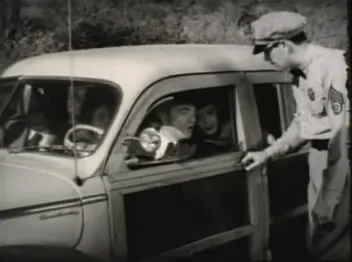
Outline and Approach
This review proceeds in stages. First, a concise plot summary sets the scene and clarifies the stakes. Second, the production background is considered, with attention paid to the limitations and necessities that shaped the final form of the film. Third, the principal performances and the film’s characters are analyzed, with a focus on Sidney Toler’s last screen appearance as Charlie Chan and Victor Sen Yung’s role as Jimmy Chan. Fourth, the stylistic and narrative elements that align The Trap with the film noir movie tradition are discussed. Fifth, reception and legacy are recalled, drawing on contemporary trade reaction and the film’s place in the Chan series. Throughout, specific scenes and lines are discussed to illustrate the film noir movie characteristics: suspicion seeded among colleagues, the discovery of bodies, the absence of a secure moral refuge, and a detective’s trap that relies on misdirection and human weakness.
Plot Summary: Beach House, Dark Secrets
The Trap begins with a travelling theatrical troupe moving into the Rutherford mansion — a coastal property chosen for rehearsals and a month-long break. The ensemble’s arrival introduces a cluster of personalities: Cole King, the impresario; Marcia, the show’s lead; Adelaide, a resentful colleague; San Toy, the Chinese showgirl; Lois, a young member of the troupe with a hidden age; Dr. George Brandt, a disgraced physician connected by marriage to one of the women; and the press agent Rick Daniels, whose sharp tongue makes him both protector and instigator.
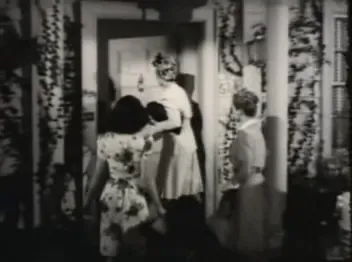
The first act of the film noir movie unfolds through verbal violence and blackmail. Marcia threatens to expose Adelaide’s secret marriage to Dr. Brandt and even reaches into Adelaide’s trunk to steal letters. These letters will prove a narrative hinge: they are the private documents that motivate theft, threats, and the desperate measures that follow. The troupe’s social order frays on the beach and in the house. As a film noir movie, The Trap emphasizes how the public profession of performance hides private moral liabilities; the company that exists in nightclubs and on stage must defend reputations and livelihoods, and that defense leads to clandestine acts.
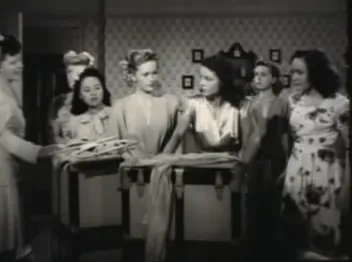
The first murder — that of Lois — is discovered by San Toy in the cabana. The body is found with a silk cord around the neck, an element the screenplay explicitly ties to exoticized “customs” used as red herrings: French and Chinese techniques are mentioned in passing, allowing suspicion to fall on both Adelaide and San Toy. This is a key structural decision in the script: to make cultural shorthand a plot device that deepens suspicion among the characters. The discovery of Lois’ body pushes the film noir movie into its procedural phase: who had motive, who had opportunity, and what was the origin of the cord?
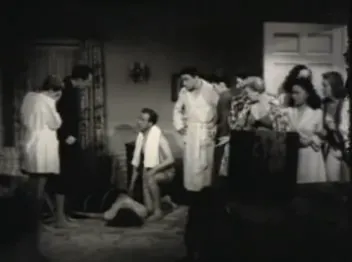
The discovery of a second body — Marcia’s corpse found on the beach with a silk cord still around her neck — complicates matters. Where one death might allow for suicide or an accident, two underscore a pattern. The film noir movie has at its centre not only the presence of crime, but the proliferation of secrets that render confession and truth unreliable; The Trap uses the troupe’s tangled histories to make every member potentially culpable. Layered on this is the press agent’s instinct to protect the show by staging the story as an accident and the company’s quick recourse to concealment over clarity — a moral choice that complicates policing and detection.
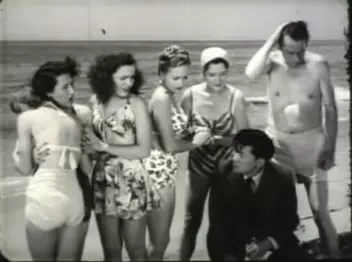
Production Context: A Film Shaped by Limits
The Trap was produced in a difficult moment for the series and its lead actor. Sidney Toler, already venerable in the role of Charlie Chan, was seriously ill during production and had limited physical capacity. These constraints informed the film’s structure: Chan does not enter until the film is well underway (about sixteen minutes in), and much of the physical detection and action is carried by his son Jimmy and by chauffeur Birmingham. From a production standpoint, that arrangement explains the film’s emphasis on ensemble interplay and smaller, contained set-pieces rather than extended investigative set-dressing or grueling chases.
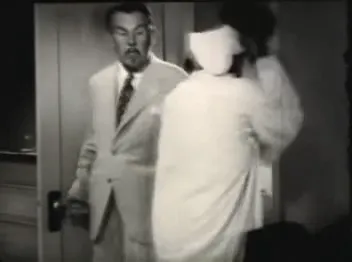
These production limits are visible on screen as script choices. The Trap becomes a film noir movie not because it embraces all stylistic hallmarks of noir but because it leverages narrative compression: plot beats must be economical, dialogue must carry exposition, and detection must be revealed through conversation and demonstration rather than broad movement. The film noir movie atmosphere — the sense of an implacable, morally compromised world — can be achieved without expressionist cinematography; The Trap relies on the script’s economy and the actors’ ability to suggest past trauma and current duplicity.
Cast and Character Dynamics
The ensemble is notable in its mixture of stock series players and supporting pros. Sidney Toler as Charlie Chan provides the intellectual center, but the film’s narrative gives considerable room to Victor Sen Yung (Jimmy Chan) and Mantan Moreland (Birmingham Brown) to carry the dynamic, investigate, and animate the action. Their presence partially reconfigures The Trap into a film noir movie in which secondary detectives and workingclass agents — not just a single, untouchable genius — must intervene to hold a fragile community together.
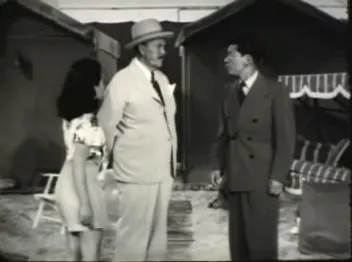
The female characters function as both suspects and victims in the fashion of many noir narratives where women occupy unstable positions of power. Marcia’s bullying and theft, Adelaide’s threatened exposure, San Toy’s vulnerability, and Lois’ secret youth construct a network of motives. The film noir movie tends to treat femininity as both arena and object of crime; The Trap follows this pattern by saturating the plot with secrets tied to reputation and survival in show business.
Sidney Toler’s Final Performance
Sidney Toler’s Charlie Chan is necessarily concentrated: limited screen time, carefully placed deductions, and the steady moral center he always represented. Toler’s physical frailty is audible and visible in the performance, yet the diagnostic intelligence — the reason Chan is present at the heart of the film noir movie — remains undiminished. The Trap becomes an elegiac bookend for Toler’s Chan: his voice and logic steer the investigation and the trap that ultimately reveals the killer. As a film noir movie, then, the film gives the older detective the tools to expose a modern underside — corruption within a performing troupe — even as the actor faces the end of a career.
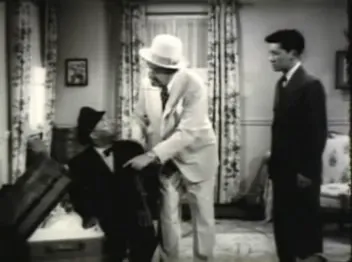
Victor Sen Yung’s Jimmy has expanded responsibilities in The Trap, which is in part a necessary shift because Chan’s physical presence is modest. Jimmy’s fieldwork, his impulsive bravery, and his loyalty are classic supporting-detective traits that the film noir movie often valorizes: younger, more active agents do the messy work while the elder detective assembles pattern and motive. Mantan Moreland’s Birmingham supplies both comic relief and crucial field muscles; in noir terms, he’s an unlikely sidekick who nonetheless helps maintain narrative momentum.
Techniques of Detection: The Trap and the Trap
The Trap stages detection as a series of staged demonstrations and logical deductions rather than long stretches of forensic observation. A particularly instructive scene finds Chan arranging a simulation to show the audience (and the viewer) that the garrote murder could not have occurred under the assumed conditions. The reenactments, the examination of knots, and the petty theft of a robe that is planted for misdirection all create a pattern of deduction that is both theatrical and methodical.
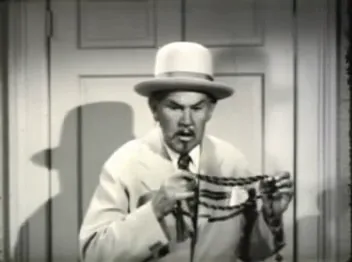
In the film noir movie tradition, detection is less about the physical trace left on a scene and more about the social trace left on relationships. Secrets, old scandals, and private letters provide motive as surely as fingerprints. The Trap capitalizes on this: a small tin box of letters becomes the fulcrum for treachery and blackmail. The film noir movie quality is present where the paper trail and reputation are the instruments of violence — where a torn relationship, a stolen letter, and a refused reconciliation lead to death.
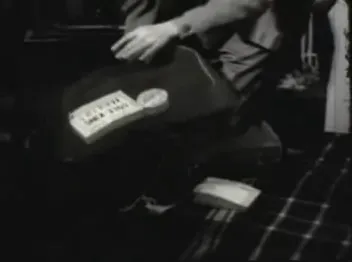
Racialized Red Herrings and Period Conventions
The Trap uses ethnically coded explanations as plot devices: the notion that a silk garrote could be a “Chinese custom” or a garrote a “French custom” is leveraged to sow suspicion among the troupe. Contemporary viewers must recognize this as a period habit — shorthand that uses the exotic to add intrigue. The film noir movie often relies on social othering to deepen mystery; The Trap follows that practice, albeit in ways that modern criticism must qualify. San Toy’s presence as a Chinese performer and the Chan family’s role as investigators complicate but do not excuse the cultural flattening that the script sometimes advances for convenience.
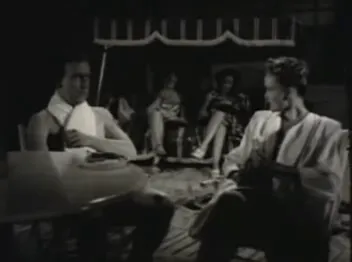
Charlie Chan as a figure simultaneously reinforces and resists racializing tendencies. Chan decodes a mystery that others cannot and thereby destabilizes the very stereotypes that were commonly exploited. The Trap uses Chan’s intellect and method to counter the simplistic attributions of criminal method to culture; he treats motive, opportunity, and human relationships as the real determinants of guilt. In film noir movie terms, the detective’s moral clarity provides an anchor against a morally ambiguous set of suspects.
Setting as Character: The Beach House Microcosm
The setting of a Malibu beach house — ostensibly a retreat — becomes a crucible where past misdeeds bubble up. The contained location is classic for mysteries and fits hand-in-glove with film noir movie sensibility. The isolation ensures that the suspect pool is limited, that suspicion ricochets across characters, and that secrets cannot easily be disentangled. The Trap exploits the setting’s intimacy: living quarters, trunk-filled rooms, and the public-private boundary between dressing-room and dune make the story’s internal logic airtight. The film noir movie dependence on a constricted geography intensifies the emotional stakes.
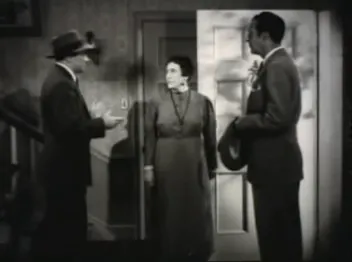
Beach imagery contributes an ironic counterpoint: sunlit surf and open air are typically restorative, yet here the ocean is associated with a fatal past and literal drowning references. The film noir movie often juxtaposes bright surfaces with dark content; The Trap does so by setting murderous secrets against the luminous California coast. The ambiance — salt air mixed with dust, perfumed dressing rooms, and the claustrophobic interiors of the Riviera-like mansion — builds a tone of unease appropriate to noirish crime drama.
Narrative Mechanics: The Trap as Plot Device
Structurally, the film sets a trap in both literal and figurative senses. Chan’s investigative method culminates in a staged scenario designed to flush out the killer. This “trap” relies on human predictability: guilt tends to repeat itself, aggression reveals itself in patterns, and the need to conceal evidence leads to reckless behavior. The Trap thus constructs a social experiment wherein misdirection — planted robes, missing letters, and simulated ether attacks — is used to force the perpetrator into error. In film noir movie practice, this is a familiar endgame: once temptation is arranged, the guilty party will attempt to control narrative and thereby reveal their hand.
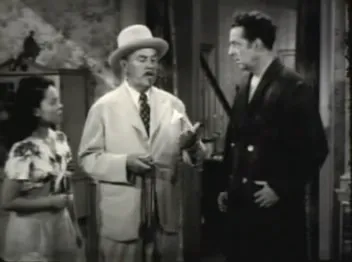
The film noir movie’s moral calculus is also at play. The Trap refuses to offer a tidy moral universe; characters’ complicity ranges from direct violence to concealment and blackmail. Rick Daniels the press agent — who counsels cover-up and image control — exemplifies the pragmatic ethics that noir often highlights: reputations and livelihoods matter as much as truth. The film’s trap does not simply pin a killer; it forces a community to account for the choices that made murder conceivable.
Reception, Limitations, and Legacy
Contemporaneous trade response recognized the unevenness of The Trap. Production difficulties — particularly Sidney Toler’s failing health — shaped the film’s patchwork construction. Trade publisher Pete Harrison was blunt: “A new low for the series. The picture does not have one redeeming feature.” Such verdicts reflect an industry perspective that expected the Chan formula to deliver its customary pleasures: brisk detection, charm, and a sense of closure. The Trap, constrained by necessity, could not satisfy every expectation.
Yet critical dismissal for a film noir movie that is compromised in production misses some of the film’s potential value. As a historical object the film reveals how series cinema adapted when its star waned, and as a studio product it shows how narrative ingenuity — simulation, misdirection, and ensemble dynamics — could compensate for absent spectacle. The Trap is useful for readers and film historians studying how the film noir movie atmosphere could be evoked through scriptcraft rather than merely through stylistic bravura.
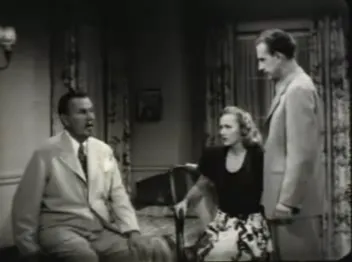
The film’s legacy includes being Sidney Toler’s final film performance; he would die in early 1947. In this sense, The Trap carries an elegiac quality: an aging star, a series in transition, and a detective character whose authoritative voice leads once more to resolution. The film noir movie approach — moral compression, suspicion among intimates, and an ambivalent social order — survives despite the film’s acknowledged flaws. The Trap endures as a study in how detective work and limited resources can conspire to produce narrative economy and a tense mood.
A Critical Reassessment: Why The Trap Matters
For the modern critic, The Trap offers points of interest beyond its immediate shortcomings. It reveals how restraint in staging can intensify dependency on dialogue and deduction, and it shows the centrality of character histories — the old scandal, the stolen letters, the secret marriage — to the mechanics of motive. As a film noir movie, The Trap may not be a textbook exemplar of shadow-drenched cinematography, yet it shares noir’s skeptical view of institutions and its interest in how private failings become public catastrophe.
The film noir movie sensibility is also preserved in the way The Trap treats show business as an institution of fragile self-fashioning: performers must police their images, management must guard the brand, and the threat of exposure functions as the primary engine of conflict. The Trap thereby aligns with noir’s focus on the precarity of social standing and the corrosive effect of secret histories.
Finally, The Trap is a compact case study in series adaptation. When a franchise star is physically compromised, stories must be reconfigured. The film noir movie identity of The Trap emerges from that reconfiguration: a narrative that privileges deduction over physical confrontation, moral complexity over spectacle, and dialogue-driven suspicion over set-piece action. The end result is less flamboyant than earlier entries in the Chan series, but potentially richer for its focus on character and consequence.
Selected Scene Analyses
Opening Arrival and Social Friction
The arrival at the Rutherford mansion immediately establishes social hierarchies and friction. Small talk and banter turn quickly into challenges about rooms and positions on the bill. The film noir movie begins here in microcosm: the troupe’s precarious economy and the need to preserve the show’s future become seeds of motive. The dialogue is economical, each line performing narrative labor by revealing status, history, and rivalry.
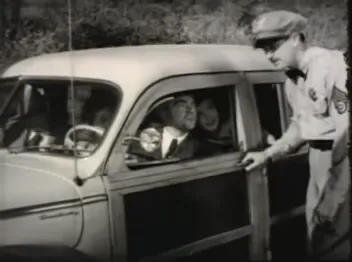
The Discovery of Lois and the First Foray into Mystery
San Toy’s discovery of Lois’ body moves the drama from squabble to death. The use of a silk cord and the invocation of exotic customs are deployed as distracting exegesis — a deliberate attempt to redirect suspicion. In film noir movie fashion, the means of death is ambiguous enough to provoke cultural stereotyping, but the detective recalibrates attention to opportunity and motive.
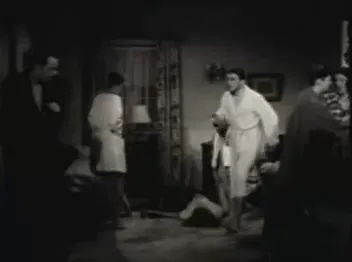
Reenactment and Logic
Chan’s demonstration to show the impossibility of a certain approach to the trunk is the film’s intellectual nucleus. This scene is theatrical, precise, and it showcases the detective’s method: set up variables, simulate action, and infer motive from the discrepancies. The Trap’s strength is that it trusts intelligence to reveal guilt; the film noir movie quality is cognitive as much as atmospheric.
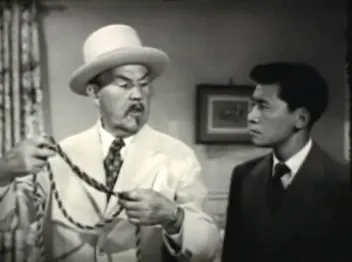
The Missing Box and the Climactic Trap
The disappearance of the tin box raises stakes and urgency. Its contents — letters and personal documents — are the social currency that drives crime. That a robbery of letters can precipitate murder is a noir staple: texts are as lethal as pistols when reputations and livelihoods are at risk. Chan’s arrangement of a trap that uses these motivations as bait is the film’s resolution in microcosm: the killer attempts to control narrative and is thus exposed. The Trap ends by restoring social order through revelation, but not without exposing how fragile that order always had been.
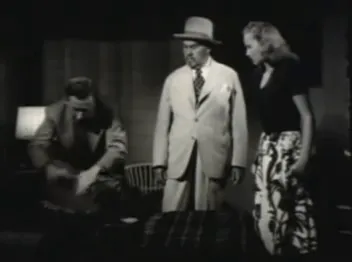
Conclusion: The Trap’s Place in Noir and Detective Film History
The Trap occupies a particular slot in the history of detective cinema: a film born of production necessity that nonetheless attests to the durability of the detective narrative and to the way a film noir movie temperament can be achieved through character and plot as much as through expressionist technique. It is Sidney Toler’s last performance as Charlie Chan, and that alone gives the film historical resonance. It is a film noir movie in the sense that it maps private corruption against public performance and uses confined geography to heighten suspicion.
Rather than dismiss The Trap outright on account of its production limits, a critic can recognize its determination to center detective logic and human motivation. The film noir movie elements — claustrophobia, moral ambiguity, and the corrosive effect of secrets — are present, if muted. The Trap is a study in how a popular series adapted, how detectives can still dominate a story with limited physical resources, and how, even in an era dominated by expressive lighting and bravura camerawork, a film noir movie atmosphere can be created with tightly written scenes and clever traps.
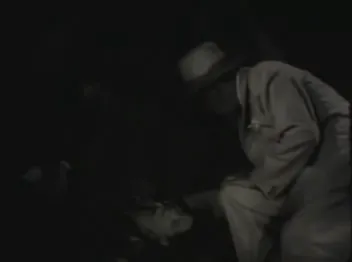
As a historical document, The Trap reveals industry realities and the narrative resilience of the Chan series. As a film noir movie, it offers a compact, if imperfect, demonstration of noir’s preoccupation with reputation, exposure, and the social economy of secrets. As a piece of the Charlie Chan corpus, it preserves the detective’s method and confirms that even in constrained circumstances, intelligence and moral inquiry can guide the resolution of dark mysteries.
For the classic cinema reader, The Trap provides an unusual vantage: a film where the noir mood arises through social claustrophobia, where the final trap is less a visual flourish than a social experiment, and where Sidney Toler’s last Chan remains the film’s moral lodestar. The Trap, in short, deserves study not only as a footnote to a series but as an example of how a film noir movie temperament can be generated by narrative craft and character pressure.
